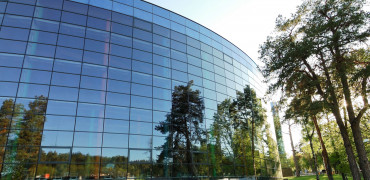Sometimes though it’s good to leave familiarity behind, especially if it is holding back the business opportunities that we know we can achieve if we embrace change and look towards the future.
As Product Manager for the pioneering Hybrid Variable Refrigerant Flow (VRF) air conditioning technology from Mitsubishi Electric, I’ve come to look on change and evolution as part of my day-to-day working life.
And I’d like to share with you some ideas on what this change in technology can mean for you – and your business.
As a VRF specialist, you’ll know all about the changes coming down the line that will affect the type of refrigerants we as a manufacturer and you as an engineer can use.
It doesn’t use refrigerant in occupied spaces – it uses water instead but still delivers simultaneous heating and cooling
It’s all to do with the Global Warming Potential (GWP) of the refrigerant and its carbon equivalent.
What this means in the immediate future is that installing VRF into buildings such as hotels is likely to now include the need for leak detection equipment.
Not only does this add to the complexity and time needed on the job, it will add significantly to your quote – not to mention adding to the ongoing maintenance for the customer as they recalibrate each individual detector each year!
And this is one of the significant benefits for the Hybrid VRF approach.



